Let’s talk...
About the plot: The cat’s names varied in the story. We can follow the events of the story and the cat’s visits to different neighbours, and pay attention to its different names. We can ask our child: Why, in your opinion, did the cat stay in the elderly lady’s house? What did it find there? How did it help her deal with loneliness?
About feelings: We can browse the story with our child and talk about the feelings of the neighbours and the cat. How did they change in the story? And what caused that?
About social relationships: We can ask our child: What changed in the cat’s neighbourhood? How was the relationship between neighbours at the beginning of the story and at the end? We can share with our child things we do with neighbours and relatives on different occasions, such as: eating together, and going on trips.
What activity can we do with the participation of neighbours to enhance the good relationship with them?
Let’s communicate...
With Grandparents: We can spend enjoyable time with grandparents, ask about them and check on them, and maybe share the story with them and ask them: What do you need?
With neighbours: We can initiate an activity with neighbours, such as eating together,or cleaning the neighbourhoodand planting flowers.
We take care of neighbourhood cats: We can provide them with water and food in containers that we can make from used cans.
Let's create...
We can examine the drawings and try to discover the characteristics of each family in the neighbourhood, give them different names, and get to know their diverse cultures as evidenced by their clothes. We can also search for information related to those cultures.
Let's research...
We can search in our home library for stories about cats, such as the story “The Cat Zarif and his Magic Glasses” from the Lantern Library, and others.
Let’s talk...
What makes us grumpy? We can clarify with synonyms like dissatisfied, upset, resentful, irritated, sad, sulky, or in a bad mood.
How does my body feel when I’m grumpy? What about my facial expressions?We can share our experiences with our children and encourage them to share theirs.
What are things that help me calm down? For example: waiting a little, hugging, playing, talking to a friend, drawing, etc.
Let's research...
Let’s examine the illustrations to find clues about the bird’s feelings. We can observe how different colours express emotions.
Let's communicate...
We can play “Imitate My Move:” Each time the child makes a move, family members copy the child’s movements, adding new ones and taking turns.
Encouraging helping others: We can motivate our children to offer assistance, using phrases like “Do you want help?” or “Can I help?” We can also encourage them to take care of neighbourhood animals by providing water or food.
Let's discover...
We can observe birds in our garden or neighbourhood and research their names.
Let's talk...
About pet care at home: Why is it important for the child? Who takes care of it, and how?
About the feelings of the child in different situations before and after Zaatar’s disappearance. What do her drawings tell us about her feelings?
About asking for help: When and whom do we turn to for help? Let’s remember situations where we supported our child.
About friendship: Zaatar is Dan’s friend. Who are our friends and what do we like to do with them?
Let’s enrich our Language...
We can suggest suitable names for a pet we want to raise. Why did we choose these names?
We can imitate the sounds of animals we know and learn their names like the meow of the cat and the bark of the dog, among others.
Let's play and have fun...
We can enjoy playing group games with our child, such as Blind Man’s Bluff, and the “Hot and Cold” game.
Treasure hunt: We can hide an object in one of the places in the house and give our child clues about the location, for example: there are plates and spoons there. We develop the child’s ability to describe by suggesting the use of different words, such as: above, inside, and describing objects and places. We then switch roles.
Let’s have fun together with role-playing games, such as: I’m the customer and you’re the seller, or the father and the child, and others.
Let's create...
We can prepare a comfortable and warm place for the household pet or neighborhood cats with our child.
We can allocate a place with our child to feed the neighbourhood cats. What food do we provide? Who do we share with from the neighbourhood?
Let's explore...
We can search for information about animals we want to learn about, and we can also spend an enjoyable day visiting the zoo.
Let’s talk...
About the title: What distinguishes a hotel from a house? Are there other words with the same meaning? How should we behave in a hotel?
About differences: People and animals have different needs, and the girl and her mother tried to accommodate the rooms accordingly. Let’s follow the drawings, discuss the needs of each visitor, and explore how the girl responded to them.
About personal traits: we can ask our child about the girl’s qualities and how they manifested in her actions. We can also discuss our child’s unique qualities compared to siblings or peers and how they are presented in their behavior.
About fostering responsibility and a sense of belonging: we can talk to our child about the roles they enjoy taking on at home and the roles each family member plays. We can emphasize how these roles express real responsibility and a sense of belonging.
About solving problems creatively: we can recall situations at home that required unconventional solutions, and how we successfully overcame them together. We can explore further by researching information about the animals mentioned in the story and their characteristics and habitats.
Let’s explore...
We can search the encyclopedia or the internet for information about the animals mentioned in the story, about their characteristics and how they live.
Let’s create...
The book’s illustrations beautifully capture the harmony between the setting and the different character traits. We can delve into the charming details of the drawings, create or design rooms for other animals based on their features.
Let’s communicate...
We can take a stroll around town and look for signs indicating accessibility for people with special challenges. We can take their picture with our phones and discuss their importance for inclusivity in general.
Discuss...
The title: we should ask our children what does “the invisible girl” mean? We should follow the drawings and ask the children, “What has made the people in the story invisible?”, “How did their lives change, and how did they become visible”?
Exclusion and bullying: with the children, review situations in which they, or one of their friends, were bullied. How did they feel? How did they act? We must suggest together other ways of dealing with the mentioned situation.
Deprivation: many characters felt they are deprived of many things, such as friendships, money, and the ability to walk. We must talk to our children about the things that we have, but others don’t, and about things that we don’t have but others do.
Connect...
Volunteer: think of a person you know who needs help, or an institution in which we can volunteer. Make volunteering a family ritual.
Isabel relied on her parents’ experience, expertise, and close relations to regain her energy and abilities to change people around her. Prepare a box of cards and write family activities you can do together to make you feel happy and close. Choose a different card each time.
Act...
Review with the children a situation in which they have been excluded. Role-play and re-enact the situation and the dialogue.
Let’s talk...
About the plot: The book is mainly based on drawings. We can encourage our children to “read” the drawings and help them describe them using accurate verbs and vocabulary and make connections between sentences. We can ask them: Why do you think Nabil noticed the wounded bird by himself in the midst of a crowd of people, while no one else noticed it? what did he do?
About feelings: We can talk with our children about the bird’s feelings. We can ask them: How did the bird feel when it hit the glass? How did it feel when no one noticed it?
About sympathy and help: Nabil alone noticed the wounded bird in a crowd of people, while no one else noticed it, and he helped it. We can ask our children: How does Nabil feel about the bird? Why did he help it? How did the bird feel as well? Have they ever seen someone who needs help? How did they feel, and what did they do?
About taking care of the bird: Nabil took care of the bird with the help of his parents until it recovered. We can talk with our children and describe what Nabil has done.
Let’s mimic...
With our children, we can look closely at the moment Nabil released the bird. Together, we can imagine the bird talking and telling the other birds about what Nabil did. We can take on the characters and act them out with our children.
Let’s communicate...
To adopt an animal, we can contact the Animal Welfare Organization. We can explore our favourite animals and find information about them with our kids.
Let’s enrich our language...
With our children, we can track the book with its sequential drawings, and we can enrich and develop the narrative ability of our child by describing the events in a sequence, such as: The father prepared a house for the bird from the cardboard box, and the mother bandaged the broken wing, and then…
Let’s take initiative...
With our children, we can pick a bowl to fill with water and place it on the balcony or on the edge of the window and designate it to water the birds. We should make sure to fill it with water every day. We can also put a bowl of water and leftover food for stray animals on the edge of the road.
Let’s talk...
About the magic glasses: We can discuss the emotions of different animals before and after wearing the glasses, asking questions such as “What did the animals feel?” “Why did they feel that way?” “How did their feelings change after wearing the glasses?” and “Why are they called magic?”
About negative (uncomfortable) emotions: We can talk with our child about situations that cause frustration, sadness, or depression and how to overcome them. What makes them feel like that? We can share our own experiences and feelings and help our child find what works for them.
About sources of happiness: We can talk with our child about the things that make them happy and satisfied. We can ask: what makes you happy?
Let’s communicate...
We can create a morning ritual or practice with our child that helps us relax and start the day on a positive note, such as watering plants, doing breathing exercises, singing a favourite song, or sitting in the garden.
Let's create...
We can make our own glasses using different materials and raw materials and invent special names for them.
Let’s enrich our language...
The book features a range of emotions such as sadness, gloom, annoyance, and happiness. We can explore the emotional state of Pete, the cat, and other animals and accurately label their emotions. We can encourage our child to do the same, using these labels to describe their own feelings.
Let’s talk...
About our child’s relationship with their name: The cat lived alone and was named so. with our child, we can discuss the meaning of their name; Who called them that? Why were they given this name? What are their personal characteristics?
About our child’s relationship with their environment: The book introduces us to the cat’s relationship with its neighborhood and the objects around it, in its many details: the views of the houses; the laundry; the different smells and sounds; Many details are missing to us, but they connect us to the neighborhood in which we live. We can talk to our child about the features of the neighborhood or street in which they live, and ask them what they like about it.
About animal welfare: Yara, Um Saeed and Abu Alia sympathized with the cat Wahid. We can talk about the animals in our surroundings, and what we can do to take care of them. We can suggest several ways to do this.
About our societal relations: Several houses were mentioned in the story in details. We can talk about homes and neighbors in our neighborhood: what do we know about our neighbors? How do we deal with them? What is our relationship with them?
About friendship: Yara and Wahid are friends. We can talk to our child and ask them: What is a friend? What do they do for us? And what do we do for them?
Let’s communicate...
We can contact the Society for the Prevention of Cruelty to Animals to adopt an animal. We can explore which animals we like and look for information about them with our children.
With our children, we can take care of stray animals in our neighborhood, and we can put food and water for them.
We can contact our neighbors, and together, we can clean and decorate the neighborhood.
Let’s play...
We can play popular games with our child – the neighborhood games that we used to play in our childhood with the neighbors’ children, such as hide and seek; “The Seven Stones,” and others.
...Let’s create
The book’s drawings present our neighborhood. We can use coloring pencils, wax colors and paint to draw our neighborhood or any special place we love in it.
We can chat...
We can chat with our child about an item they have been keeping for years. How did they get it? What is special about it? We can also talk about a cherished item that was lost. What do they remember about it?
We may want...
We may want to talk to our child about an object that has been passed down from generation to another, such as a dress, a piece of jewelry, or a tool at home. What does it mean to us?
This is an opportunity...
This is an opportunity to talk to our child about an experience of loss that they went through. How does he/she feel? And what can help them overcome feelings of longing and sorrow?
We can talk...
Sophia had wonderful times with her friend, teddy. We can talk about our friends, and what we would like to do with them.
We can encourage...
We can encourage our child to imagine what teddy went through on his long journey. They may want to tell us. We can help them write as they draw teddy’s trip along the seas and rivers. This activity prepares the child for writing a diary at a later stage.
We can visit...
We can visit the beach with our family. We can search together for objects we find, and imagine their owners. Our child may want to write a letter that s/he puts in a bottle and throws into the sea. Who knows? Someone might find it one day.
We can read...
We can read advertisements in the book about lost things. Which ones did our child love? It is enriching for our child to read the ads posted in the streets, as the child’s exposure to the printed graphic symbols will make it easier for him/her to learn to write and read letters later.
We can encourage...
We can encourage our child to read the letters aloud, and to think of another animal, to whom the mailman shouts: “Hi…. a letter for you!” Who is the sender? What could the letter contain?
The mailman is...
The mailman is lonely even though he is busy all day delivering letters. We can talk about what it means to be alone. How does he feel? Do we sometimes feel alone? when?
We can think...
We can think of someone we know who we feel is alone. How can we make them feel less lonely? We might visit them more often, bring them food they love, accompany them on a picnic, or do something that entertains them and makes them happy.
We can talk...
We can talk about the different types of letters that people exchange, from paper to electronic messages, and about the methods of exchanging letters throughout the ages. It would be fun to take our child to the post-office so we can check our letters together, and send another one.
Mom, a letter for you...
“Mom, a letter for you!” Together we can design a mailbox from cardboard for our house, and write letters for each other. Sometimes it is easy for us to write down what we find difficult to say, and we may enjoy short letters full of thanks and affection.
The mailman’s forest...
The mailman’s forest is full of exotic animals. We may want to get to know them with our child.
How did the letters...
How did the letters get to the mailman’s bag? Together, we can follow the little mouse as we look at the beautiful illustrations of this book.
Consider the cover...
Consider the cover of the book: how do the drawings illustrate the title?
When reading aloud...
When reading aloud, we can pause every time we come across the phrase “extra yarn” and we can encourage our child to say it with us. This helps them become more engaged in the storytelling in an enjoyable way.
The townspeople...
The townspeople and Annabelle’s classmates mock her, but instead of getting angry or sad, she responds by knitting sweaters for them. We can chat with our child about the impact of Annabelle’s reaction. If we had been in a similar situation, how would we have acted?
Together, we can...
Together, we can imagine the journey that the magic box took to return to Annabelle. What did it encounter on the way?
If we found a...
If we found a magic box, what would we like to find in it? What would we do with its contents?
Annabelle took...
Annabelle took the initiative to redecorate her town with her colorful yarn. With our child, we can think of simple ways that can make our neighborhood more beautiful, such as planting some roses in front of our house.
There are many...
There are many beautiful and easy crafts that can be made with children. What do you think of an art workshop in which family members participate?
Let’s stop at...
Let’s stop at the first page when the strange animal appears in front of the other three animals. Why do they see him as strange? Which people do we see as “strangers”? Why?
On page 9...
On page 9, there is a discussion among animals about breaking the suitcase. The fox insists on breaking it and knowing its contents, while the rabbit refuses. We can chat with our child about their respective motives. Does he choose to be a fox or a rabbit in this situation?
Let’s imagine together...
Let’s imagine together the story from strange animal’s perspective. Why did he leave his home to reach a new place? What did he encounter on his way? How does he feel when he is away from home? Do we know people like him?
The animals support...
The animals support the stranger by welcoming him among them and building him a house to replace the one he lost. How can we support people who left their country and their home, perhaps willingly or by force, and came to us?
For the strange animal...
For the strange animal, a home is a place where one feels safe, comfortable and loved. What does home mean to our child?
Together, we can...
Together, we can look at the two pictures hanging on the wall on the last page. We can talk about the differences between them. What do the colors tell us in each picture?
If we want to...
If we want to travel to a remote place for a long time, what do put in our suitcase? Our child can draw the things they take with them.
Some pictures are...
Some pictures are dear to our hearts and we keep them or carry them with us wherever we go. It’s nice to sit together as a family, and share these special pictures together.
While we read...
While we read the book together, we can look at its drawings. We may stop at pages 6 and 7 and learn about the animals that appear from the windows with their owners. What do the faces of their owners show? And what do the expressions on the face of the child who appeared with his elephant say?
We may want...
We may want to stop on page 16 and read the letter on the sign aloud. What does this sentence mean? And why are elephants prohibited from entering the club? How does the child and the elephant feel? We may want to encourage our child to think about what he might do next.
Together, we can...
Together, we can learn about the animals which appear in the book. Can we keep them all at home? If we were to keep a strange animal at home, which animal would we choose? We may want to draw it.
If we are keeping...
If we are keeping a pet at home, what do we like about it? What do we like to do with it?
Because this is what...
“Because this is what friends do …” We can chat with our child about their different friends: What does s/he like to do with them? We may want to tell our child about our friends, too. It would be fun if we could invite family friends, of all ages, for a fun activity together.
Our child may...
Our child may want to design a sign that they can hang on the door of their room which welcomes all their friends. Family members may wish to participate in designing a sign at the entrance to the house that welcomes all guests.
In which seasons...
In which seasons of the year do the events of the story take place? What do the illustrations tell us about each chapter?
With our child...
With our child, we can track the feelings of the grandfather in the book. Which things bring him joy, and which cause him sadness or confusion?
We can invite...
We can invite our child to think about his/her grandparents. Do they look like the grandfather in the book? What else distinguishes him/her?
We can recall...
With our child, we can recall what they love about their grandfather or grandmother, and what sometimes bother them. We can talk about the things our child would like to do with their grandmother/grandfather.
The grandfather...
The grandfather in this book is gradually losing his memory. Some grandparents may suffer from other health problems, such as heavy hearing, poor eyesight, or limited mobility. We can chat with our child about what they can do to help their grandmother/grandfather.
The house of...
The house of grandfather and grandmother has its smells, tastes, and distinct sights that inhabit the memory of children when they grow up. We can chat with our child about what they love in their grandparents’ house. Is there a corner in the house that they favor? What do they like to do there?
In the book...
In the book, the grandson expresses his love for his grandfather in different ways, as he plays with him, hugs him, and goes for a walk with him. We can encourage our child to think about a way that expresses his love for his grandfather and grandmother: maybe a small gift that they can make, or doing something they love…
My grandfather was...
“My grandfather was young once…” It is nice for our child to browse a photo album with their grandfather, and hear their grandfather’s stories about his childhood. We can also make a photo album that brings our child together with his grandfather/grandmother. There is no doubt that our child will keep it close to their heart.
The symptoms...
The symptoms of the disease gradually start to appear on Bear, as his nose is blocked and his throat hurts, then he becomes ill with a fever. We can talk with our child about how we feel physically and psychologically when we are sick.
Friends came to...
Friends came to the aid of Bear, who is feeling sick. We can talk about what each one of them did. We can choose one of them and keep track of what they did.
We can remember...
We can remember a visit we went on together to see a patient. How did we ease their pain and entertain them? What can we do if a family member or friend in kindergarten gets sick?
“Feel better,”...
“Feel better,” is what we usually say to the patient. What other nice phrases can we say to cheer them up?
Chamomile, sage...
Chamomile, sage and rosemary are some of the aromatic plants that we use to prepare hot drinks that relieve the severity of a disease. We can look for them together in our garden or in the wilderness, and make a delicious drink mixed with healing honey!
Let’s pretend...
“Let’s pretend we are sick,” the children enjoy to play pretend, and they like to show how they take care of their parents. This is also an opportunity to reinforce their sense of capability to help others, even with small things.
Taking care of...
Taking care of our health – “Early to bed and early to rise makes a man healthy, wealthy and wise,” the popular proverb tells us. We can have a conversation with our child about ways to take care of our health: What should we eat? How do we maintain our personal hygiene? How do we strengthen our body and relax it so that it can regain its energy and liveliness?
Bear’s disease...
Bear’s disease is contagious, and it affected his friends. We can talk with our child about ways to prevent diseases, such as washing hands regularly, and being absent from kindergarten while sick. What else can we do?
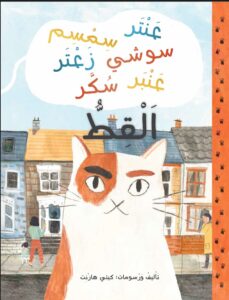 Archie Snuflekins Oliver Valentine Cupcake Tiberius
Archie Snuflekins Oliver Valentine Cupcake Tiberius 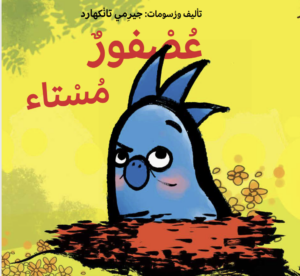 Grumpy Bird
Grumpy Bird 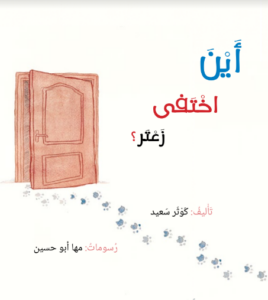 Where did Zaatar Disappear?
Where did Zaatar Disappear? 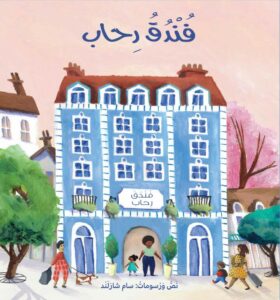 Rihab’s Hotel
Rihab’s Hotel 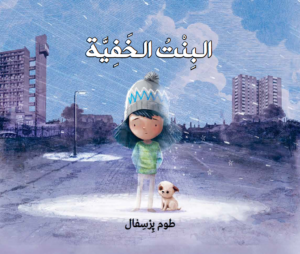 The Invisible
The Invisible 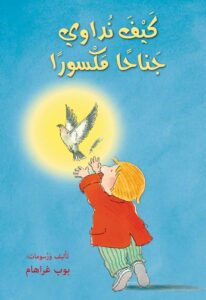 How to heal a broken wing
How to heal a broken wing 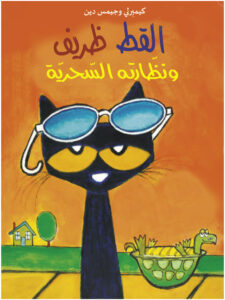 Pete the cat & his magic sunglasses
Pete the cat & his magic sunglasses 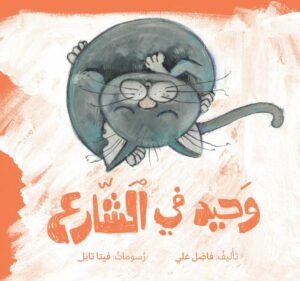 Wahid in the Street
Wahid in the Street 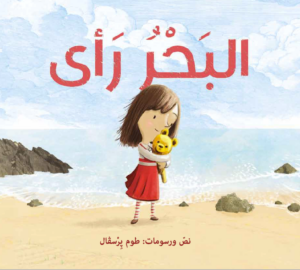 The Sea Saw
The Sea Saw 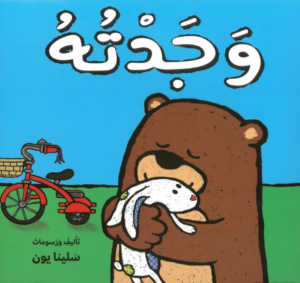 Found
Found 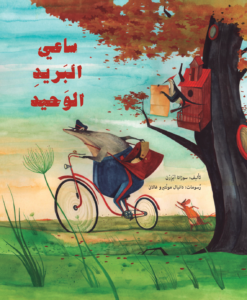 The Lonely Mailman
The Lonely Mailman 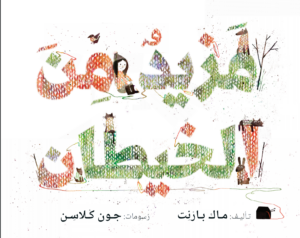 Extra Yarn
Extra Yarn 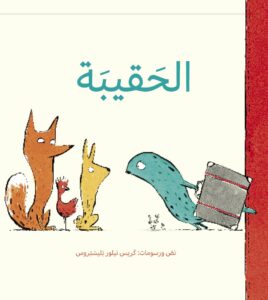 The Suitcase
The Suitcase 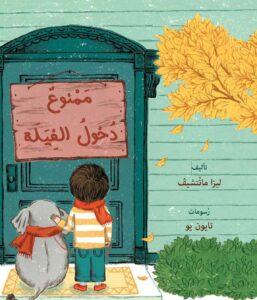 Strictly No Elephants
Strictly No Elephants 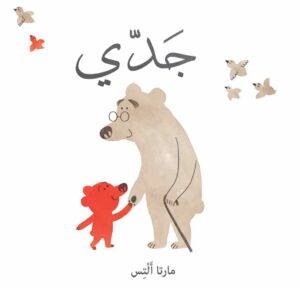 My Grandpa
My Grandpa 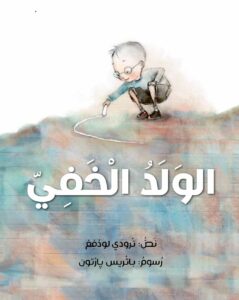 The Invisible Boy
The Invisible Boy 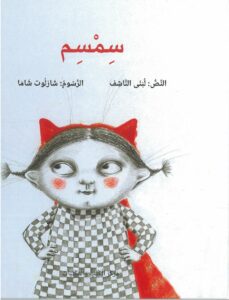 Simsim
Simsim 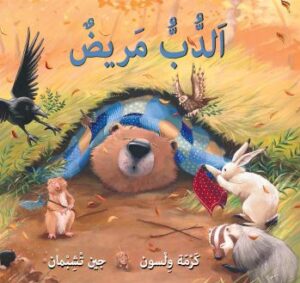 Bear Feels Sick
Bear Feels Sick 
